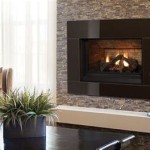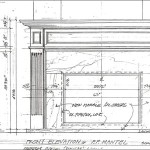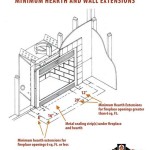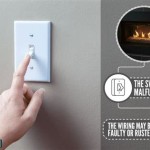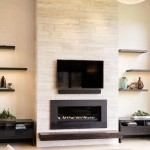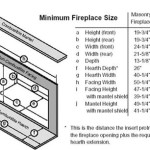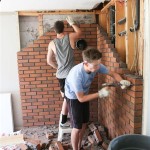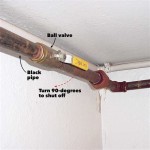Propane Fireplace Freestanding: A Comprehensive Guide
Freestanding propane fireplaces offer an efficient and aesthetically pleasing heating solution for a variety of spaces. They provide the ambiance of a traditional fireplace without the complexities and potential mess associated with wood-burning models. Understanding their features, benefits, installation requirements, and safety considerations is crucial for making an informed decision regarding their integration into a home or business.
These fireplaces typically consist of a metal firebox, ceramic logs that mimic the appearance of real wood, a burner system fueled by propane, and optional features such as blowers or remote controls. Designs range from rustic and traditional to modern and minimalist, allowing for seamless integration into diverse interior styles. The propane fuel source offers a consistent and reliable heat output, making them appealing for supplemental heating in colder months or as a primary heating source in smaller spaces.
Key Point 1: Advantages of Freestanding Propane Fireplaces
Freestanding propane fireplaces boast several advantages over other heating options and even compared to other types of fireplaces. One significant benefit is their ease of installation. Unlike built-in fireplaces that require significant construction and potentially structural modifications, freestanding units require only a connection to a propane source and proper venting. This simplified installation translates to reduced costs and quicker setup times.
Furthermore, propane fireplaces offer exceptional heating efficiency. Propane burns cleanly and efficiently, converting a high percentage of its energy content into usable heat. This efficiency translates into lower heating bills compared to electric heaters or older, less efficient heating systems. The ability to effectively heat a specific area also reduces the need to heat the entire house, leading to further cost savings.
Aesthetic appeal is another key advantage. Freestanding propane fireplaces provide a realistic flame appearance and the comforting glow associated with traditional fireplaces. This ambiance enhances the atmosphere of a room, creating a focal point and improving overall comfort and relaxation. The availability of different log designs and firebox styles allows selection of a model that complements the existing décor.
Finally, the convenience of propane operation is noteworthy. No wood needs to be chopped, stacked, or carried, eliminating the mess and labor associated with wood-burning fireplaces. Propane fireplaces also offer instant on/off operation and adjustable flame heights, providing precise control over the heat output and ambiance.
Key Point 2: Installation and Venting Requirements
Proper installation is paramount for ensuring the safety and efficiency of a freestanding propane fireplace. The installation process typically involves connecting the fireplace to a propane supply line, which can be either a portable propane tank or a hard-piped propane connection. The propane line should be installed by a qualified professional to ensure leak-free connections and adherence to local codes.
Venting is another critical aspect of the installation process. Propane fireplaces require proper venting to expel combustion byproducts safely outside the home. Venting options include direct vent, B-vent, and vent-free models. Direct vent fireplaces utilize a sealed combustion system that draws air from outside and vents exhaust gases directly outdoors through a coaxial vent pipe. This system is highly efficient and minimizes the risk of indoor air pollution.
B-vent fireplaces rely on a natural draft to vent exhaust gases through a vertical vent pipe. This type of venting requires proper chimney or vent compatibility and is less common than direct vent systems. Vent-free propane fireplaces, while readily available, require careful consideration. While they do not require external venting, they release combustion byproducts directly into the room. For this reason, they often have oxygen depletion sensors (ODS) and are generally only permitted in certain jurisdictions and spaces with adequate ventilation.
Local building codes and regulations should always be consulted before installation. Permits may be required, and inspections are often necessary to ensure compliance with safety standards. A qualified HVAC technician or fireplace installer can provide valuable guidance on selecting the appropriate venting system and ensuring proper installation.
Key Point 3: Safety Considerations and Maintenance
Safety is of utmost importance when operating a propane fireplace. Regular maintenance and adherence to safety guidelines are essential for preventing accidents and ensuring proper functioning. One critical safety measure is to install carbon monoxide detectors in the vicinity of the fireplace. Carbon monoxide is a colorless and odorless gas, and detectors provide an early warning system in case of incomplete combustion.
Routine maintenance should include inspecting the burner system, venting system, and gas connections. The burner should be cleaned periodically to remove any debris or dust that can affect combustion efficiency. The venting system should be inspected for blockages or damage, and any leaks should be repaired immediately by a qualified professional. The ceramic logs should also be cleaned to remove soot or discoloration, which can diminish the aesthetic appeal of the fireplace.
A qualified technician should perform an annual inspection of the fireplace to ensure all components are functioning correctly. This inspection should include checking the gas pressure, burner performance, venting system integrity, and safety controls. Addressing any issues promptly can prevent costly repairs and ensure the continued safe operation of the fireplace.
It's also crucial to educate all household members about the safe operation of the fireplace. Children should be supervised around the fireplace, and flammable materials should be kept away from the heat source. Never leave the fireplace unattended while in operation, and always turn it off before leaving the house or going to bed. By following these safety guidelines and implementing a regular maintenance program, individuals can enjoy the warmth and ambiance of a freestanding propane fireplace safely and effectively.

Propane Freestanding Stoves From Stewart S Hearth In Miramichi

Free Standing Gas Fireplace Stoves For 30 On Now

Freestanding Gas Stoves Stove Fireplaces Napoleon

Freestanding Gas Stoves Friendly Fires

Natural Gas Propane Freestanding Stoves

50 Free Standing Ventless Gas Fireplace Visualhunt

Enviro S Series Freestanding Gas Or Propane Fireplace Fireplaces By Cameron

Valor Madrona Freestanding Gas Stove Bob S Intelligent Heating Decor

50 Free Standing Ventless Gas Fireplace Visualhunt

Freestanding Gas Burning Stoves Sierra Hearth And Home

